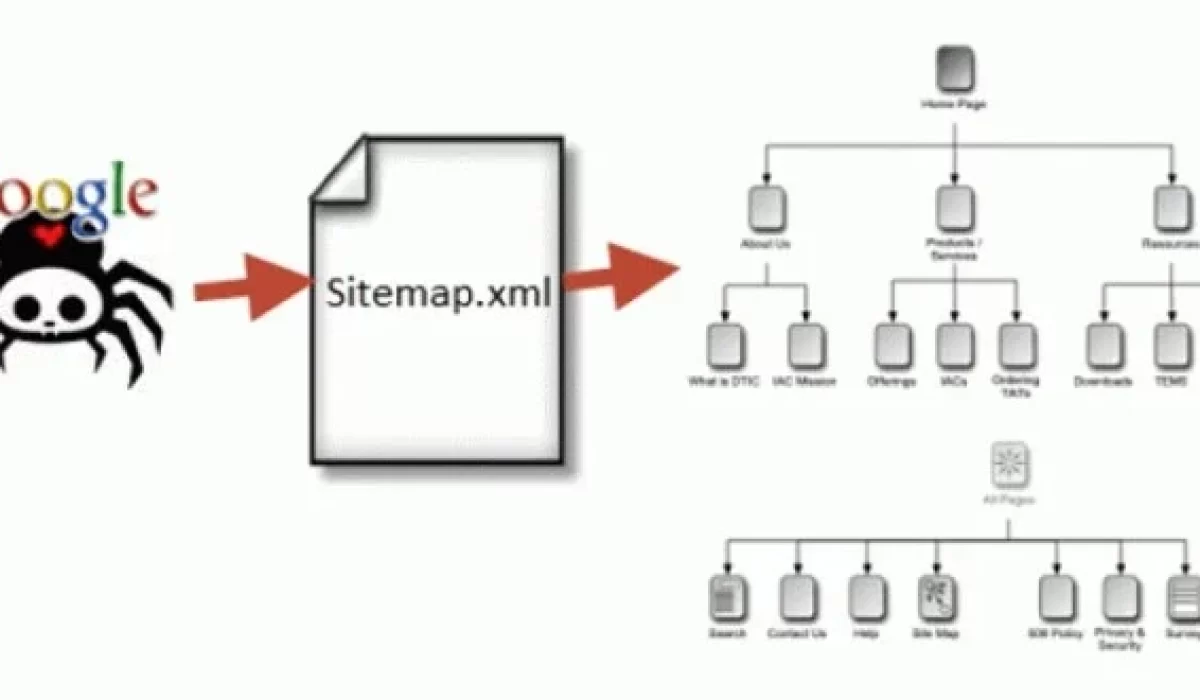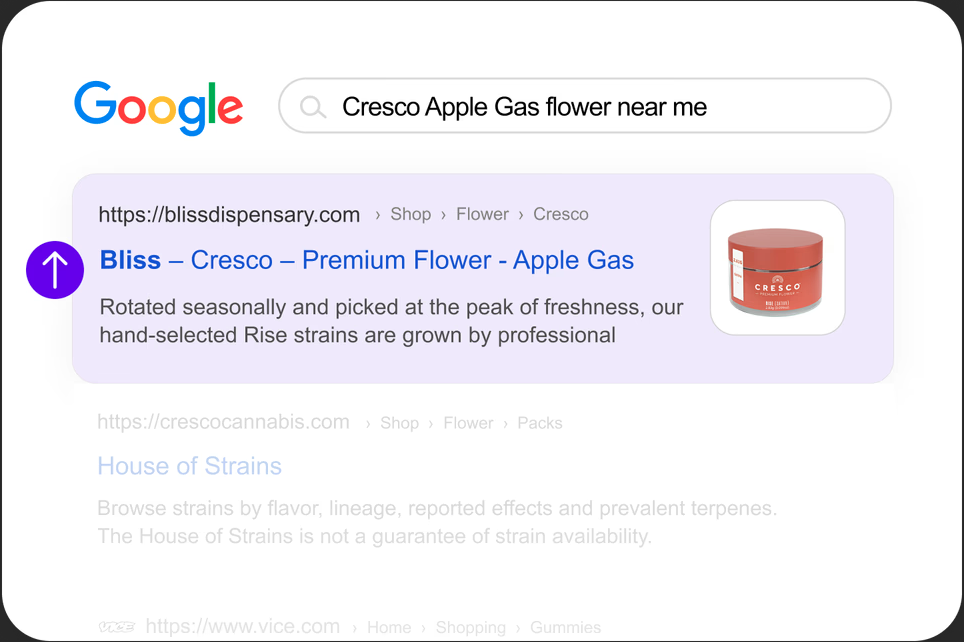Google is constantly changing the way people get search results. Its bots crawl millions of web pages within seconds to display the best result for an organic query. Some of the best websites miss out on visibility for SERPs because search engine bots do not properly understand web content.
XML Sitemaps as a pointer to inform Google bots about all the relevant pages on your website, so they can understand it better. They’re essential in improving your website SEO performance – even if your interlinking is poorly done.
This article explores everything you need to plan XML sitemaps, their importance, and how to build one for your website.
What Is an XML Sitemap?
An XML sitemap is a directory or file highlighting a website’s important pages, ensuring that Google and other search engines can crawl and index them accordingly. It also helps search engines understand what your website is about.
When Google learns about your website content, you stand a better chance of outranking the competition during an organic search.
An XML sitemap contains the URLs and other information about your web pages. These features of XML include the last modified date of the pages, the change frequency, and the page’s relevance to other URLs.
The purpose of the XML sitemap is to inform Google and other search engines about the website content so that it can be crawled and indexed quickly.
What Is Sitemap.XML Used For?
An XML Sitemap is your website’s blueprint; it features information about the web content and how one page connects to another.

So, what is it used for? The XML sitemap is designed for search engine crawlers to find new website pages and index them. This greatly affects how your web pages appear during organic searches.
Thus, having an index XML sitemap is beneficial for your SEO performance. It’s okay to wonder, ‘do I need to keep XML files?’ the answer is not really. Your website, as long as it is optimized for keywords, may appear on SERPs.
The reason you should have an XML sitemap is for indexing purposes. While search engine bots can locate your pages, XML sitemaps make it much easier and faster for them to do so. It also helps pages that aren’t backlinked to get crawled and indexed.
XML Sitemap Best Practices
If you’ve wondered how search engines understand a website and display it for a query, the answer is hyperlink XML sitemaps. Now that you understand what it is, what are the XML sitemap best practices to deploy?
Check them out:
● Rank your web pages accordingly. One of the best practices you can implement before you create an XML sitemap is to rank them accordingly. The higher a page is ranked, the quicker it will be crawled and indexed. For instance, you can assign a higher score to your blog or product page because they are constantly updated. Those are called dynamic pages. Static pages such as Contact and About Us should receive lower website scores.
● Categorize your website content. Another tip to plan XML sitemap is to structure your content correctly. Structuring your content establishes its hierarchy. Naturally, your primary content is the homepage. And then followed by service pages and the subcategories. Thus, you should create web content that falls within the correct category.
● Use a sitemap generator tool. People have often wondered how to view XML of a web page. The answer is simple: get a sitemap generator tool. However, some websites have in-built tools to help generate the XML sitemap for your site. If you’re using WordPress to build your website, you can use the Yoast plugin to generate the sitemap. Google XML Sitemaps is another tool you can use to generate the index XML for your site.
● Submit your sitemap to Google. After creating the XML sitemap for your website, you should submit it to Google. You can achieve this by using Google Search Console. All you need to do is click Sitemaps on your dashboard and add the sitemap URL in the space provided.
● Place an HTML sitemap. Sitemaps come in different forms. The one visible to users who land on your website is the HTML sitemap. Thus, the difference between HTML and XML sitemap is that one is uploaded on the website while the other is submitted to Google search bots.
● Don’t include non-indexed URLs. Another tip is that you shouldn’t include a non-indexed URL in your sitemap. These are URLs that you don’t want search engines to index. They could be personal pages you don’t want to be exposed to public viewing.
How Does an XML Sitemap Generator Boost SEO?
An XML sitemap generator improves your website’s SEO performance in several ways. Firstly, it makes search engines locate all your most important pages quicker during an organic search.
Another reason is that the XML sitemap generator helps search bots understand what a website is all about. That’s because it reveals a website with all of its most important web pages. When search engines understand your website content, they will rank it better than before.
How to Build an XML Sitemap
There are two methods to build and check website sitemap XML. Let’s look at them below:
Manual Building
You can build the XML sitemap of your website manually, but it will take some time. All you need to do is use a crawler like Screaming Frog to crawl your entire website. It will provide you with all the URLs of your website.
After generating the sitemap in an XML format, you need to code it using a text editor such as Sublime Text. You can also use your Windows Notepad or Nano (for Linux and macOS).
Automatic Building
So, how to see the XML of a web page? If you’re using a content management system like WordPress, Wix, Shopify, or Squarespace, there are available plugins to generate your sitemap. On your dashboard, you can simply look for it and generate it.
WordPress admins can make use of the Yoast plugin to generate the sitemap. Navigate to SEO > General > Features and toggle the ‘XML sitemaps’.
You will be able to see your sitemap when you click yourdomain.com/sitemap.xml or yourdomain/sitemap_index.xml. Thus, you can get XML from URL.
How to Add Sitemap XML to Google Search Console
Now that you know how to get XML code of a website, adding it to the Google search console is the easy part. Follow these tips:
● Log in to your Google Search Console.
● Select the account associated with your website.
● On the dashboard, locate Sitemaps.
● Paste your sitemap URL in the space provided.
● Click submit.
How to Add Sitemap XML to Robots Txt
Robots.txt files are quite different from XML sitemap files. A robots.txt is located at the root directory of your website and informs search engines on the pages to crawl and not crawl.
Robots.txt files are essential in a website because it’s the first place search bots go to learn about what to crawl.
If you don’t have one, then you can create one in your web server. Simply type the following text:
User-agent: *
Disallow:
Add the sitemap XML to your robot by typing the following:
Sitemap: http://www.yourdomain.com/sitemap.xml
User-agent: *
Disallow:
Difference Between HTML and XML Sitemap
The difference between HTML and XML sitemaps is in their functionalities. HTML sitemap is a blueprint of your website for visitors to understand your site. Thus, visitors can locate different pages by locating the HTML sitemap on your homepage.
On the other hand, an XML sitemap is a directory for search engines to understand your website and take note of your most important pages. It reveals the URLs and metadata of your website and how they interconnect with themselves.
Do I Need to Keep XML Sitemap
Now that you know your sitemap XML is essential for performing excellently during an organic search, do you need to keep it?
Technically, you don’t need to because you can always find it when you need it by manually searching for it or using an SEO plugin.
Sample Sitemap XML
Below is what a sitemap XML looks like when you generate it:
Conclusion
XML sitemaps are essential for your website. Thankfully, we’ve explore all you need to know about it and how to implement it for your website.




